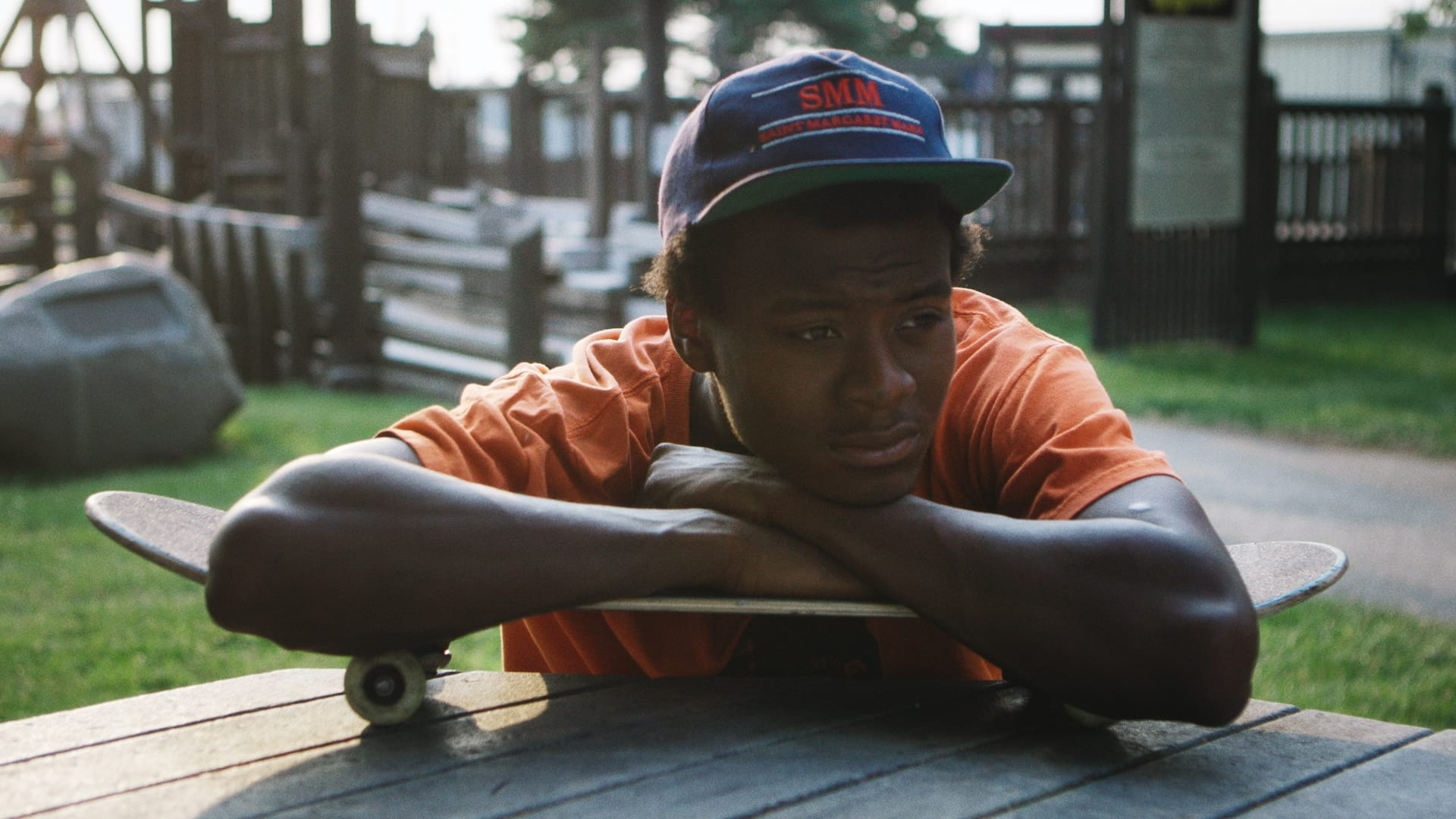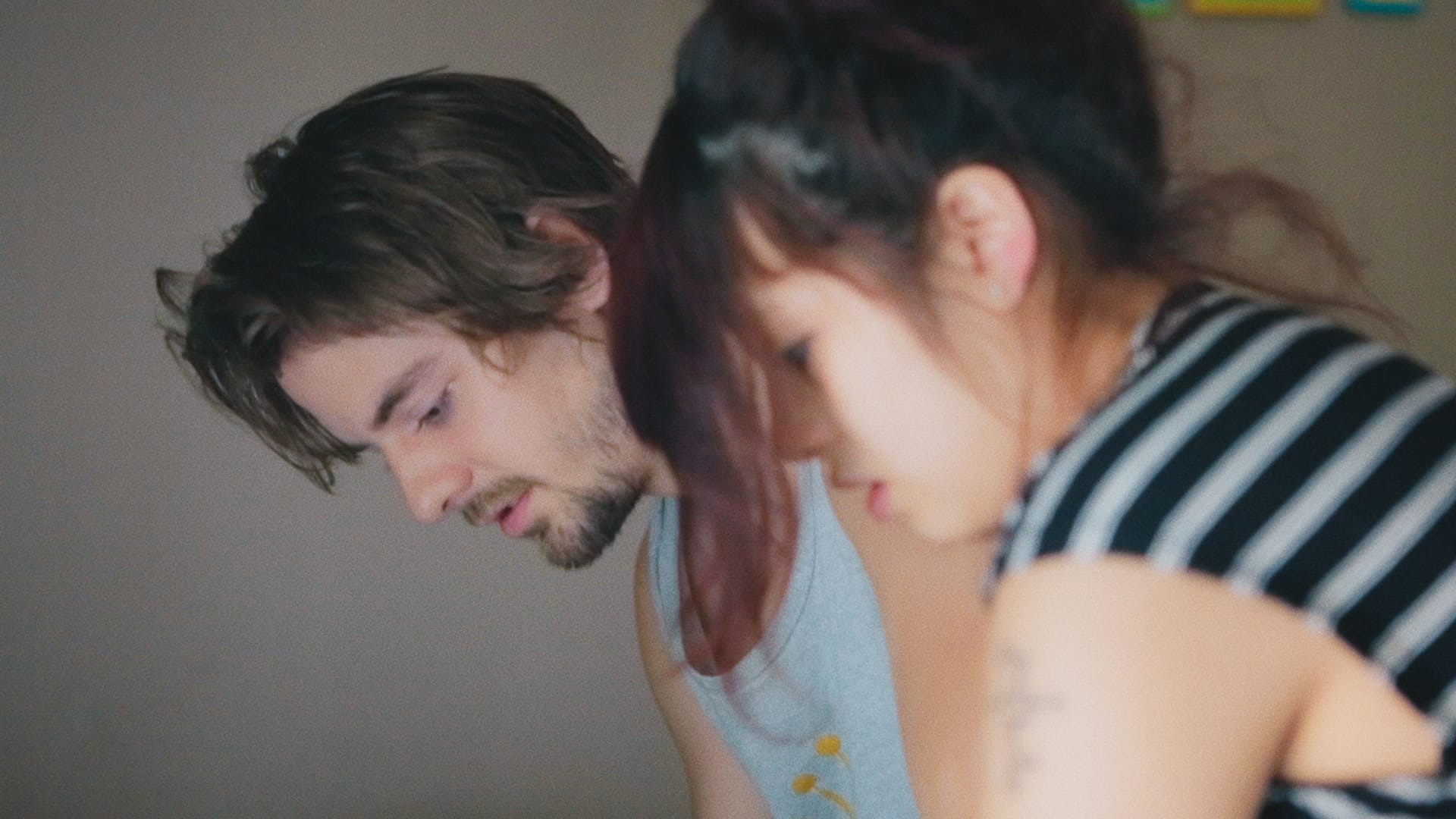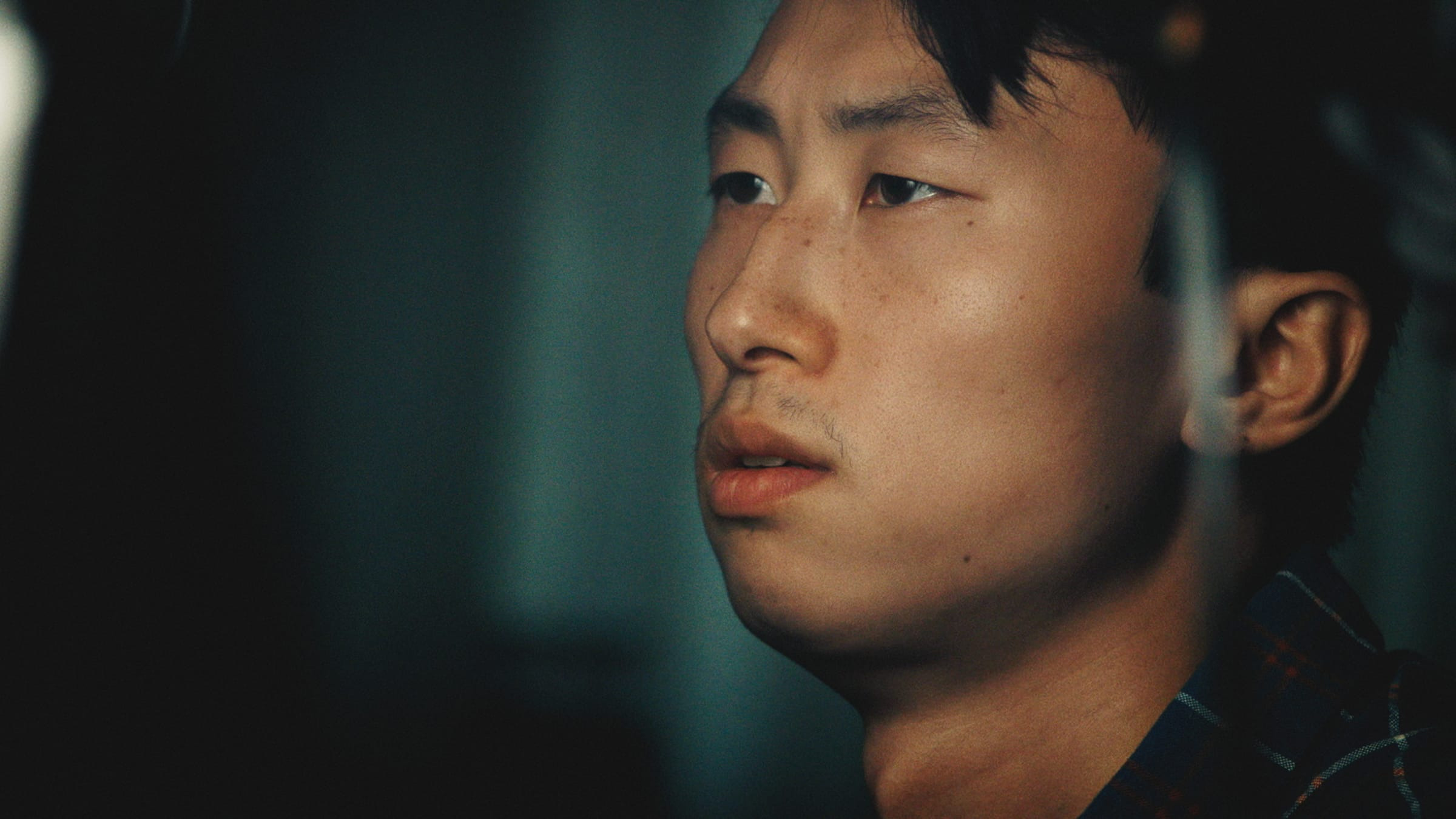
In the course of selling or promoting a film, a director will invariably be asked, “What’s this movie really about?” The desired answer is usually predetermined—marketers want a concise, two-sentence hook; reporters want a sound bite; critics want a thesis to grapple with. For Bing Liu’s extraordinary 2018 documentary Minding the Gap, the answer was never going to be particularly straightforward. That wasn’t due to any fault of Liu’s vision for the film that he shot and produced over several years but rather to its complexity, and to the insistence of critics and audiences on sorting films into neat categories. This is especially the case when it comes to documentaries, which carry the additional expectations that they clearly lay out what they’re about and that that subject matter be something momentous. The recent explosion in nonfiction filmmaking has only increased the pressure to achieve social importance.

The fact is, Liu’s film is about something momentous, although it doesn’t necessarily announce that at the outset. The main figures in Minding the Gap are all skateboarders, but it’s not a conventional skateboarding film, where the principal subject usually expresses himself through tricks, athleticism, and, occasionally, slapstick humor. Skate movies are typically shot at ground level, with an array of fish-eye lenses that give the viewer a close-up view of the tricks on display. Liu made the conscious decision to shoot most of the skateboarding scenes in Minding the Gap at eye level, to show the faces of his subjects. He intersperses this sometimes lyrical imagery with more conventional skate footage he shot as a teenager, much of it showing the same Rockford, Illinois, parks, and, in a few scenes, the main characters in his film, Keire and Zack. This creates a bildungsroman effect—at the outset, you see skinny young boys clumsily emulating the skate films they love. At the end, you see young men who still skateboard but have largely grown out of the pastime’s aesthetic trappings, and who now turn to it for escape, or community, or solace.
It would be simplest, though, to say that Minding the Gap is not a skateboarding film at all; it’s an exploration of the way cycles of abuse can radiate into every human relationship. The project began with a loose thesis—Liu interviewing skaters around the country about their lives. But over time, his focus sharpened to families and trauma, particularly around absent fathers. And his movie evolved into a personal tale involving the filmmaker, as well as the kids he grew up skating with. His engaged, unflinching camera follows his subjects through a few years of their lives in Rockford, but the story does not linger on any one narrative, nor is there much to say about what happens in the film other than Some kids grow up together in an American town. There are three main characters—Zack, Keire, and Liu—but Liu does not present them as if they exist free of the context of their friends and families. This in itself isn’t groundbreaking; most character-driven documentaries fill in family details, but Liu withholds the kind of creation myths that typically inform biographical work, wherein the author or filmmaker plumbs some salient childhood detail and expands on it to explain why the great human or the monster is the way he or she is. He doesn’t even really make the sort of implicit statement that his mentors at Kartemquin Films made in Hoop Dreams, in which the viewer sees the juxtaposition of the vérité footage of William Gates’s life in Chicago’s notorious Cabrini-Green housing projects and his time at his new private school in the suburbs and draws the correct conclusion about race and poverty in America.

“The film’s revelatory moments come not in perfectly lit interview sessions but rather through the interactions between Liu and his participants.”
What we know is that these three kids come from households in which they experienced and witnessed abuse, and we see how that trauma follows them to adulthood, whether it’s in Keire’s clear discomfort with his brother and mother; in Zack’s drinking and possible violence toward Nina, his girlfriend and the mother of his child; or in Bing’s damaged relationship with his own mother after living with an abusive stepfather.
Liu chose to make a film without damnation or absolution. We understand that they all grew up (or are still growing up—Keire is several years younger than the other two) working-class in a run-down Rust Belt city, but this context is presented matter-of-factly. Outside of a short montage of archival audio that tells the story of Rockford’s postindustrial economic fallout and high rates of unemployment and violent crime—and of how about a quarter of the latter can be attributed to domestic violence—the film draws no clear lines of causation. Minding the Gap does not seem concerned with prescribing solutions to or even with defining social problems. In the wrenching final scene, Liu, who is Chinese American, tells Keire, who is Black, that his story reminds him of his own. This desperate empathy feels almost taboo today, but it runs throughout the film, especially when it comes to Zack, who seems to unravel during the time that the movie is being made.
Liu’s interest, as the film progresses, becomes more and more not just about the experiences of these three kids, himself included, with their fathers but about how they dealt with the violence and abuse in their homes. Early in the film, Bing visits one of Rockford’s skate shops and talks to the store’s owner, a middle-aged man named Eric, who goes about fixing up Bing’s old board. After some reminiscing about the times when a teenage Liu would come into the store, Eric says, “Skateboarding meant more to you than being cool and having friends. It was your thing to get away.”
In the skate-shop scene and throughout the film, Liu shoots and interviews his subjects at the same time, which—along with the fact that he settled on two skaters from his own former scene to center in his film, after driving around the country for months and shooting conversations with people from other skateboarding communities—gives him an immediate presence that many documentary filmmakers shy away from. This isn’t the occasional hint of the Maysles brothers’ existence, when they’re directly addressed by Edie Beale or when the reflection of Albert Maysles as an old man with a camera can be glimpsed in a mirror in Iris Apfel’s Manhattan living room. Nor is it the unmiked questions shouted by Errol Morris from the other side of his Interrotron. Liu is really there in a different way. The film incorporates archival footage he shot when he and his principals were all kids, and the home-video effect gives even more intimacy to the film. Its revelatory moments come not in perfectly lit interview sessions but rather through the interactions between Liu and his participants. Nowhere is this clearer than in his interviews with Nina. After Zack’s roommate plays Liu a disturbing audio recording of a fight between Zack and Nina, the director asks Nina about it on camera. The scene is shot in close-up so that at first glance the camera feels wildly intrusive. Liu’s calm affect as he asks Nina about what happened is also a bit galling at first, especially when one considers that Zack is also a principal character in the film. But what you come to realize is that the lack of shock and outrage on Liu’s part is the result of familiarity, not apathy, and that both he and Nina are talking in the exhausted tones we reserve for the flawed people we love.

Liu has said that Minding the Gap really started making sense to him only after he watched Ross McElwee’s Sherman’s March. The comparison may at first seem like a bit of a reach. McElwee’s film is nominally about a filmmaker—McElwee—who sets out to follow General William Tecumseh Sherman’s march through the South, and to document its “lingering effects.” But before he can get started, McElwee keeps being distracted by women he meets along the way. The result is a film that satirizes the innate narcissism of first-person filmmaking. We are not supposed to take McElwee’s inquiry into the history of the Civil War seriously.
“Once Liu fully comprehends that Keire and Zack are serving as stand-ins for his own trauma, he feels compelled to join them on the other side of the lens.”
Liu seems to have a similar indifference to big histories of identity and culture. Minding the Gap has a diverse cast, but it is not a film that’s explicitly about race. Liu’s Asian-ness is hardly mentioned, and while we understand that his mother immigrated to the United States from China, we don’t get the litany of painful historical markers that have become de rigueur in certain kinds of documentary filmmaking. There is no mention of the Chinese Exclusion Act or Japanese internment or the Immigration and Naturalization Act of 1965. The three boys in the film aren’t defined so much by the histories of their respective people as by their personal experiences of abuse. Liu’s genius is in the audacity of his choice to place himself and his mother right at the heart of the film. There is an honesty in the move that also functions as criticism—just as McElwee pokes fun at the types of mawkish films that win grants and make the rounds at festivals, Liu ultimately rejects the idea of journalistic distance between a documentary filmmaker and his subjects. Once he fully comprehends that Keire and Zack are serving as stand-ins for his own trauma, he feels compelled to join them on the other side of the lens.

This switch accomplishes something counterintuitive: because we have learned Liu’s initial motivation for making the film and watched him as he uncovers what lies underneath it, we see, in excruciating detail, the ways in which an abusive childhood has shaped his life, and that leaves us free to see his original subjects, Keire and Zack, as fully formed individuals rather than the abstract symbols another documentarian might have given us. Because Liu’s presence in it is so strong, the film seems to have the casual subjectivity of our daily conversations. There is, though, an inherent unreliability to this setup: the interactions among the filmmaker and the subjects aren’t always exactly natural—in the first scenes of the film, both Zack and Keire turn directly to the camera and express their uneasiness about being recorded. But Minding the Gap nonetheless comes across as considerably more honest than the sometimes empty conventions of “true vérité,” in which the filmmaker wants you to believe that none of the people being filmed are aware of the cameras, the sound people, or the bright lights.

Freed from such formal documentary tricks, we, the viewers, can question whether skateboarding really did provide an escape for Liu. Or if we believe Keire when he says, “I could seriously be on the verge of having a fucking mental breakdown, but as long as I’m able to go out and skate, I’m completely fine.” In interviews, Liu has said that skateboarding is not a panacea, and that while it may help you escape the present, it does not paper over the past or ward off the future. But his film is far more agnostic about this question. In the opening credits, we see Zack and Keire skateboarding down an empty street at sunset. On their boards, Zack and Keire almost look like dogs sticking their heads out a car window—the panting half-grins, the eyes glazed over with satisfaction. Scenes like these are invariably followed by brutal testimonies about the abuse they suffered and witnessed as kids, and the fallout they still endure as adults. How can life be simultaneously filled with thoughtless joys and with terrors that we cannot escape? Minding the Gap is a skateboarding film, but it’s one that is honest about why kids congregate anywhere there are three steps and somewhere to land, no matter how ugly that place might look to us. We understand that the three boys have not lived uncommon lives, that Rockford, Illinois, could be anywhere that parents are cruel to their children or that men are cruel to women. We know these boys will not find salvation or absolution in skateboarding, but we also understand why they will keep trying.




